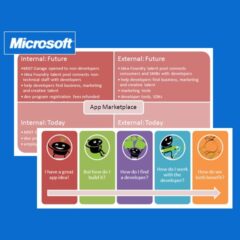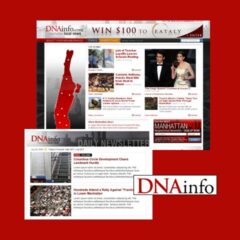Feb01
About a decade ago, newspaper agencies began to lose sight of what advertisers were asking for, and at the same time they failed to monetize valuable online content, focusing almost wholly on one of the worst forms of online advertising: banner ads. They also ceded revenue from areas like classifieds and job postings to Internet competitors, and missed new online opportunities in areas like coupons, business directories, video infomercials, and email direct marketing. It’s little wonder then that newspaper revenues are shrinking. The question persists, how is it that Silicon Valley 20-somethings found it so easy to eat the newspaper industry’s lunch? Why was the industry so slow to adapt? This blog is about forward-thinking solutions, so I am not eager to dwell on what has already happened. The lunch has been eaten; it’s time to get a new one. Hindsight, as Malcolm Gladwell suggests in his essay “Connecting the Dots,” is subject to “’creeping determinism’–the sense that grows on us, in retrospect, that what has happened was actually inevitable.” (Although, dear reader, I do look forward to your comments in this regard.) Let’s just say for now that newspapers were neither staffed nor prepared to embrace digital innovation....
Jan31
For generations, local businesses relied on newspapers as the mainstay of their advertising budgets. In fact, until 1992, when TV and cable overtook them, newspapers were by far the largest source for overall US advertising spending, representing 37% in 1949 and dropping steadily to under 15% in 2008. And with that, the pundits began sounding the death knell for newspapers. Advertising Media Share chart by Martin C. Langeveld But for small and mid-size businesses, who cater to a more geographically local market, local newspapers continued to linger on as a critical source for advertising. After all, local news readers are well-qualified, targeted local business customers. The person reading the news is more likely to clip a coupon, read about your business, and walk into your store. Today, the local paper is itself no longer the primary focus of local business advertising spend. Newspaper agencies have seen their profits eroded as advertisers move away from traditional print advertising in favor of online, mobile, and social media. (In upcoming posts I’ll discuss where that ad spending has headed, and what newspapers can do to survive and even flourish in the digital age.) According to a 2010 report from Pew Research and...
Jan30
When I first conceived of this blog I had intended to write about the remarkable technical work that rocketed DNAinfo.com, the hyperlocal Manhattan news site, from 0 to 1.2 million visitors/month in about 18 months–something of a record in a town known for the competitiveness of its news outlets. (Here’s a link to an article that gives context for how my alma mater is faring in the battle for New York.) I can’t lay claim to the real driver of DNAinfo’s success–the remarkable editorial quality that made it so popular among New Yorkers. For that I have to credit the editorial staff, especially Leela De Kretser, who now runs the show. But like a proud father I had “bragging rights” to the technology that enabled that content. After all, while content is king, you can’t leave orbit without a rocket ship. (And while I may mix metaphors on occasion, I do know how to build those web-enabled rocket ships.) Technology almost always serves a greater business purpose. I’ve been a consultant to the Fortune 1000 for many years, and I’ve always told my clients that, before we embark upon a web or mobile project, we first need to look...










